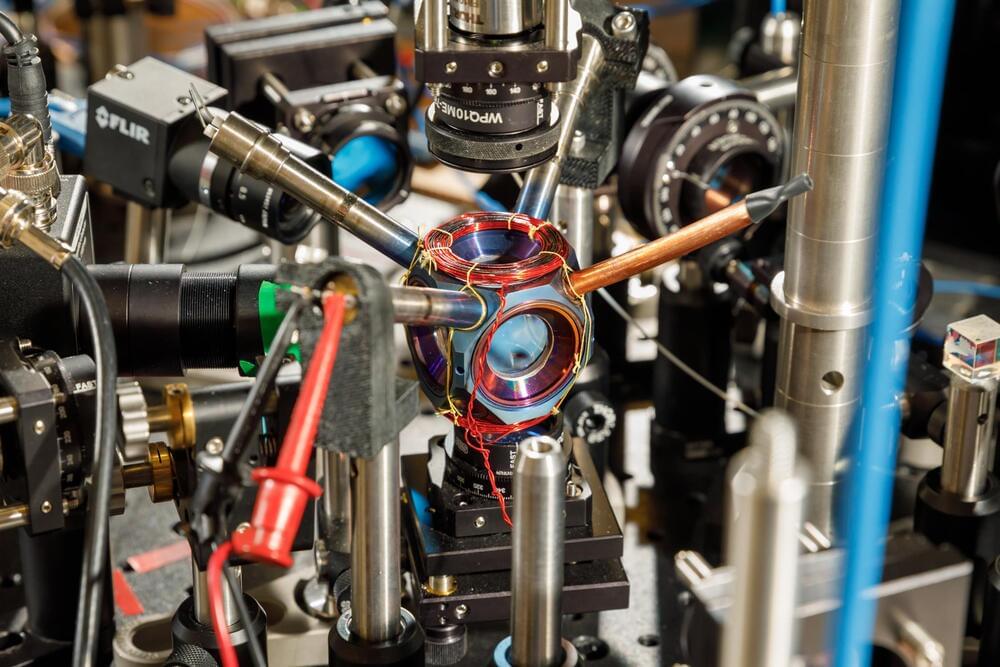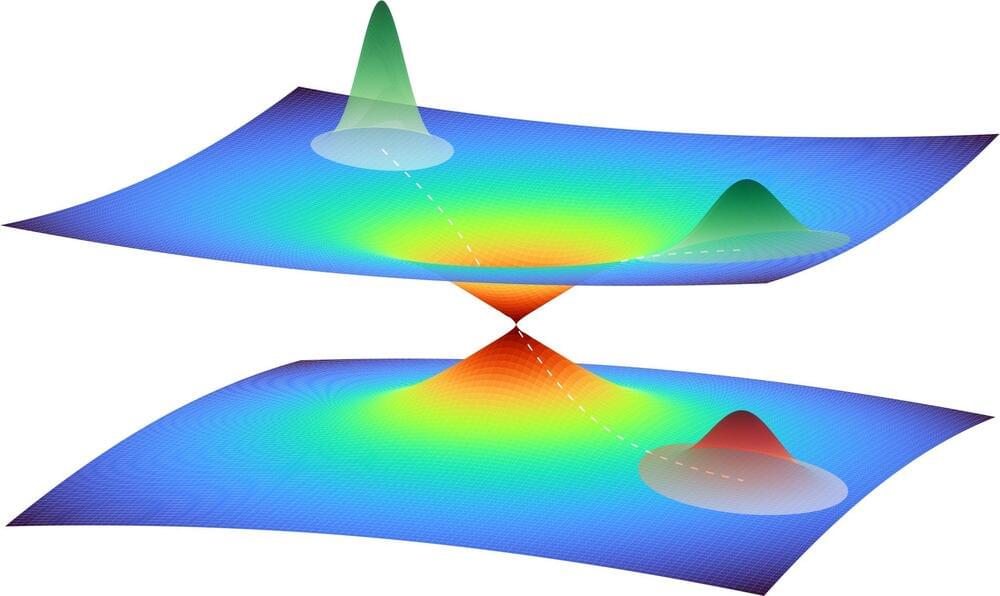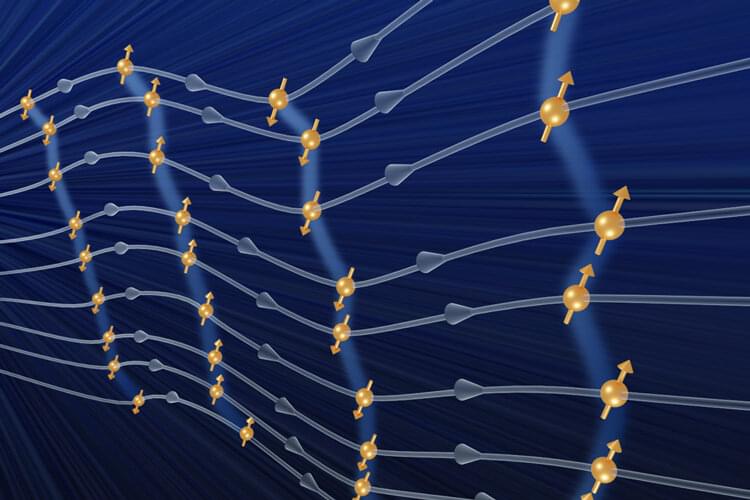Do you know what a computer can do in that time?



Scientists created an intelligent material that acts as a brain by physically changing when it learns. This is an important step toward a new generation of computers that could dramatically increase computing power while using less energy.
Artificial intelligence imitates human intelligence by recognizing patterns and learning new things. Currently, it is run on machine learning software. But the “smarter” computers get, the more computing power they require. This can lead to a sizable energy footprint, which could destabilize the computer.
In the last seven years, computer usage has increased by 300,000-fold. Since 2012 the amount of computing power used to train the largest AI models has doubled every 3.4 months, the MIT Technology Review reports. And, the escalating costs of deep learning, can have environmental costs too. Researchers at the University of Massachusetts, Amherst, found that a common large AI model emits more than 626,000 pounds of carbon dioxide in its lifetime, nearly five times that of the average American car.

Sandia National Laboratories is developing an avocado-sized vacuum chamber made out of titanium and sapphire that could one day use quantum mechanical sensors to provide GPS-grade navigation without the need for satellites.
In only a few short decades, GPS has gone from a military technology to finding so many everyday applications that modern society is now dependent on it. However, GPS is not always available in places like high polar latitudes or in deep mountain valleys, and it can be jammed or spoofed.
The vulnerability of GPS and similar systems lies in their dependence on constellations of satellites that orbit the Earth. These satellites emit time-stamped signals that are synced to atomic clocks. Using these signals, a GPS receiver in something as small as a wristwatch can use the Doppler effect on the satellite signals as they pass overhead to make an extremely precise fix on the receiver’s position and velocity. If these signals are interrupted or corrupted, the system fails.

When sound was first incorporated into movies in the 1920s, it opened up new possibilities for filmmakers such as music and spoken dialogue. Physicists may be on the verge of a similar revolution, thanks to a new device developed at Stanford University that promises to bring an audio dimension to previously silent quantum science experiments.
In particular, it could bring sound to a common quantum science setup known as an optical lattice, which uses a crisscrossing mesh of laser beams to arrange atoms in an orderly manner resembling a crystal. This tool is commonly used to study the fundamental characteristics of solids and other phases of matter that have repeating geometries. A shortcoming of these lattices, however, is that they are silent.
“Without sound or vibration, we miss a crucial degree of freedom that exists in real materials,” said Benjamin Lev, associate professor of applied physics and of physics, who set his sights on this issue when he first came to Stanford in 2011. “It’s like making soup and forgetting the salt; it really takes the flavor out of the quantum ‘soup.’”.

A new phase of matter, thought to be understandable only using quantum physics, can be studied with far simpler classical methods.
Researchers from the University of Cambridge used computer modeling to study potential new phases of matter known as prethermal discrete time crystals (DTCs). It was thought that the properties of prethermal DTCs were reliant on quantum physics: the strange laws ruling particles at the subatomic scale. However, the researchers found that a simpler approach, based on classical physics, can be used to understand these mysterious phenomena.
Understanding these new phases of matter is a step forward towards the control of complex many-body systems, a long-standing goal with various potential applications, such as simulations of complex quantum networks. The results are reported in two joint papers in Physical Review Letters and Physical Review B.

A team of physicists and engineers at Lawrence Berkeley National Laboratory (Berkeley Lab) successfully demonstrated the feasibility of low-cost and high-performance radio frequency modules for qubit controls at room temperature. They built a series of compact radio frequency (RF) modules that mix signals to improve the reliability of control systems for superconducting quantum processors. Their tests proved that using modular design methods reduces the cost and size of traditional RF control systems while still delivering superior or comparable performance levels to those commercially available.
Their research, featured as noteworthy in the Review of Scientific Instruments and selected as a Scilight by the American Institute of Physics, is open source and has been adopted by other quantum information science (QIS) groups. The team expects the RF modules’ compact design is suitable for adaptation to the other qubit technologies as well. The research was conducted at the Advanced Quantum Testbed (AQT) at Berkeley Lab, a collaborative research program funded by the U.S. Department of Energy’s Office of Science.

A new analytical technique is able to provide hitherto unattainable insights into the extremely rapid dynamics of biomolecules. The team of developers, led by Abbas Ourmazd from the University of Wisconsin–Milwaukee and Robin Santra from DESY
Commonly abbreviated as DESY, the Deutsches Elektronen-Synchrotron (English German Electron Synchrotron) is a national research center in Germany that operates particle accelerators used to investigate the structure of matter. It is a member of the Helmholtz Association and operates at sites in Hamburg and Zeuthen.

UC Berkeley physicist Norman Yao first described five years ago how to make a time crystal—a new form of matter whose patterns repeat in time instead of space. Unlike crystals of emerald or ruby, however, those time crystals existed for only a fraction of a second.
But the time has arrived for time crystals. Since Yao’s original proposal, new insights have led to the discovery that time crystals come in many different forms, each stabilized by its own distinct mechanism.
Using new quantum computing architectures, several labs have come close to creating a many-body localized version of a time crystal, which uses disorder to keep periodically-driven quantum qubits in a continual state of subharmonic jiggling—the qubits oscillate, but only every other period of the drive.
Signup for your FREE trial to Wondrium here: http://ow.ly/NwIS30rNQ5m — Be sure to check out Sean Carroll’s series called, “Mysteries of modern physics: Time” — I highly recommend it!
A good definition of information in physics: “information contained in a physical system = the number of yes/no questions you need to get answered to fully specify the system.”
References:
Lee Smolin’s paper: https://arxiv.org/abs/2104.09945
Prior video on entropy: https://youtu.be/T6CxT4AESCQ
Wave function collapse and time: https://youtu.be/wXJ9eQ7qTQk.
Chapters:
0:00 — Why is time one way but physical laws are not?
2:19 — What is Entropy? Disorder and information.
5:29 — Does entropy cause time?
7:12 — What is time? Recorded past vs future possibilities.
8:07 — Lee Smolin’s theory of time.
10:31 — Will time always flow forward? heat death & big freeze.
12:33 — Best online course on time.
Summary:
In quantum mechanics, it’s just as natural to go forward in time as going backwards. And if you look at a typical Feynman diagram, you can turn the diagram either way. Where does this transition from time symmetry at the quantum level, to time asymmetry at the macro level occur?
To understand its irreversibility, we have to look for other irreversible processes in nature to see if there is any correlation — such as in thermodynamics, Entropy.

Theory of loop quantum cosmology describes how tiny primordial features account for anomalies at the largest scales of the universe.
While Einstein’s theory of general relativity can explain a large array of fascinating astrophysical and cosmological phenomena, some aspects of the properties of the universe at the largest-scales remain a mystery. A new study using loop quantum cosmology—a theory that uses quantum mechanics to extend gravitational physics beyond Einstein’s theory of general relativity—accounts for two major mysteries. While the differences in the theories occur at the tiniest of scales—much smaller than even a proton—they have consequences at the largest of accessible scales in the universe. The study, which was published online on July 29 2020, in the journal Physical Review Letters, also provides new predictions about the universe that future satellite missions could test.
While a zoomed-out picture of the universe looks fairly uniform, it does have a large-scale structure, for example because galaxies and dark matter are not uniformly distributed throughout the universe. The origin of this structure has been traced back to the tiny inhomogeneities observed in the Cosmic Microwave Background (CMB)—radiation that was emitted when the universe was 380 thousand years young that we can still see today. But the CMB itself has three puzzling features that are considered anomalies because they are difficult to explain using known physics.